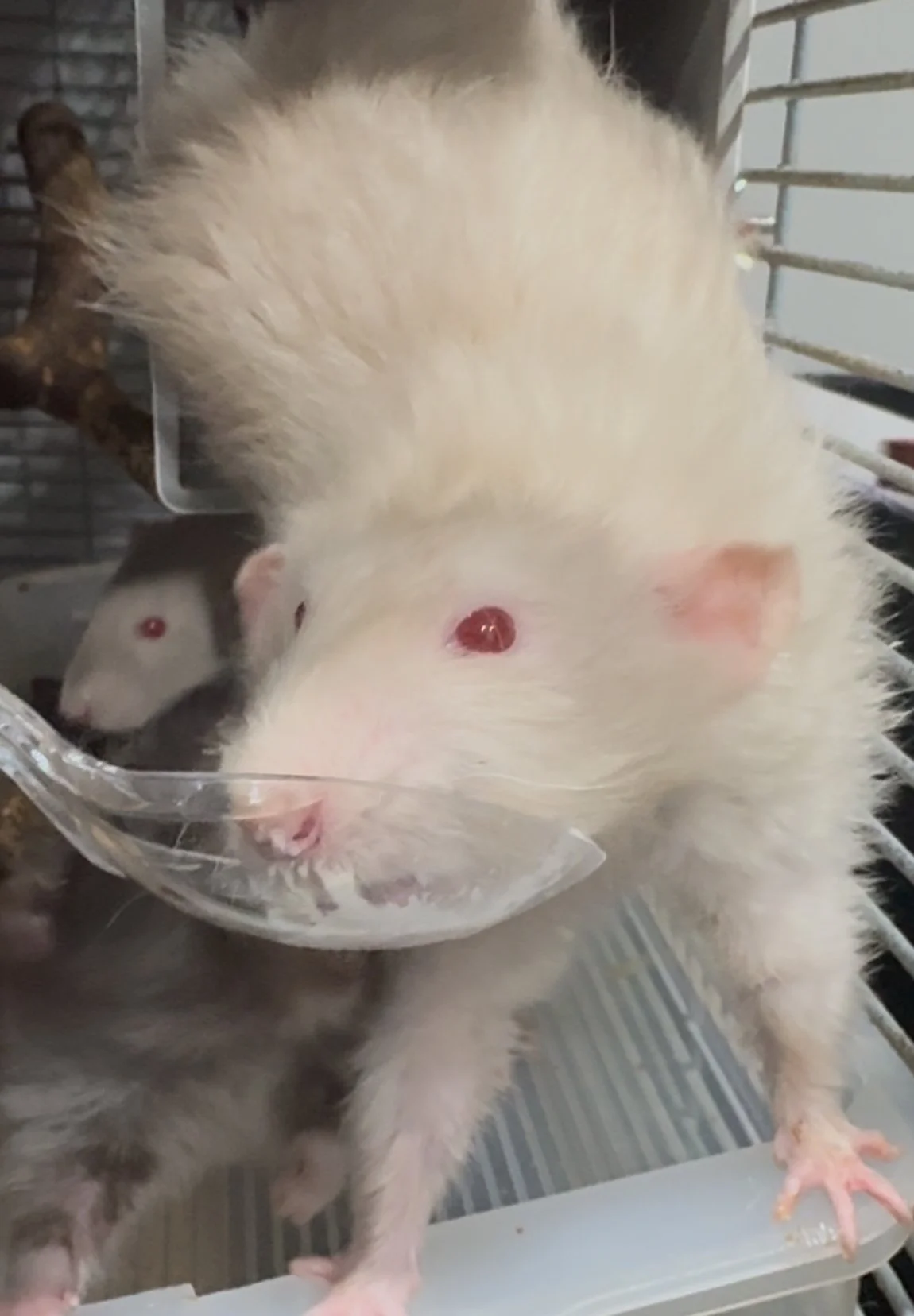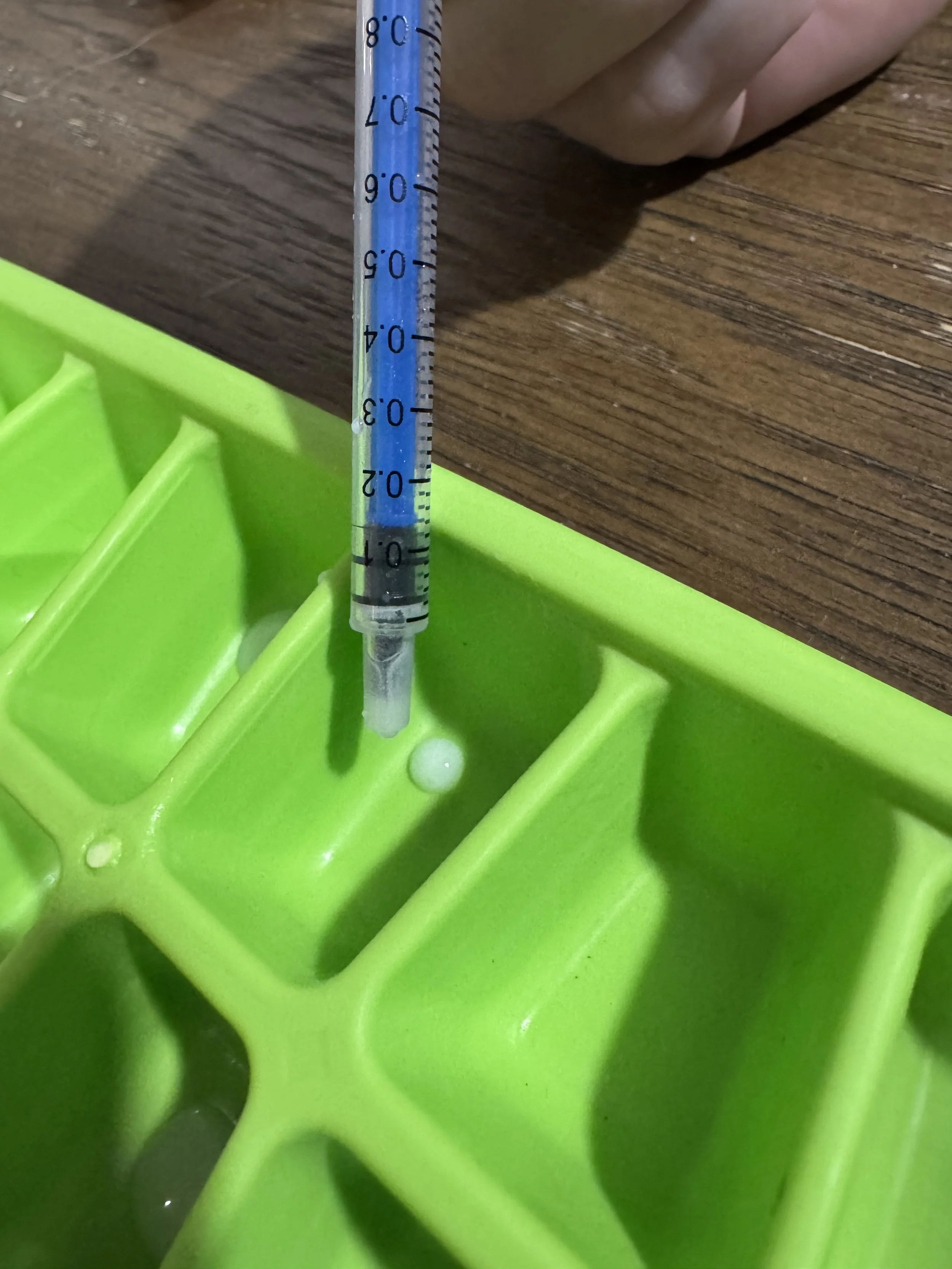
How to Safely Give Medications To Pet Rats
Giving medicine does not have to be stressful. With the right tools, good timing, and a few tasty mix ins, most rats will take medications happily. This guide covers oral versus topical meds, dosing by weight, easy delivery tricks, storage rules, and what to watch for.
Scale
Most prescriptions for small animals are based on body weight, which means you will get the best results if you can weigh your rat accurately. A compact digital scale that reads in grams is ideal, since you can track weight changes during illness and confirm the correct dose each time. Add a small bowl or cup on top of the scale and tare it to zero so the display shows only your rat’s weight.
Link to Purchase: Amazon
Syringe
You will also want spare dosing syringes. Even when the clinic sends one home, the little rubber ring on the plunger wears out with repeated washing and time. Keep a few backups so a sticky plunger never ruins a dose. Stock these in two sizes so you are covered for nearly everything: a 1 milliliter syringe for precise tiny doses and a 5 milliliter syringe for larger volumes or flavored mixes.
Link to Purchase: 1mL on Amazon, 5mL on Amazon
Mixing Container
Small containers make mixing easy. Condiment cups or even a clean ice cube tray let you blend a tiny amount of liquid medication with a treat base and then present it neatly. Keep a simple medication log as well.
One quick vocabulary note for clarity. Milliliters and cubic centimeters are the same volume. If a syringe says 1 mL or 1 cc, it measures the same amount.Link to Purchase: Condiment Cups on Amazon, Ice Cube Tray on Amazon
Other Potentially Handy Tools
The Essentials You Should Keep at Home
Your vet will prescribe a specific dose per kilogram or per gram for each medication. The easiest habit is to weigh your rat at the same time each day, record the number in grams, and then follow the label directions to convert that weight to a volume on your syringe. If your vet provided a dose in milliliters for your rat’s current weight, you can use it as written, but still recheck the weight every few days during treatment so you notice changes early.
How to calculate and draw a dose:
Weigh your rat in grams and write it down.
Read the prescription label and instructions from your vet.
Shake the bottle if the label says shake well.
Insert the syringe tip into the bottle, invert the bottle, and pull slightly more than the target amount.
Tap the syringe to move bubbles to the top, then push back to the exact line.
Double check the line against the written dose in your log.
Cap the syringe or go straight to mixing and giving.
Dosing by Weight Without the Headache
Oral meds are usually the simplest, because you can turn them into a tiny special snack. Many keepers dose right inside the cage. That way the experience feels like a normal treat time and not a medical event. A helpful habit is to teach spoon treats long before anyone is sick. Offer a drop of baby food or yogurt on a spoon once in a while so the spoon itself becomes a positive cue. When a real dose arrives, your rat already knows the routine.
If you are dosing one rat in a group, give tiny non medicated tastes to the cage mates at the same time. This keeps the mood friendly and prevents the medicated rat from being singled out. Measure the medication first, then combine it with a very small amount of a mix in so you know the full dose will be eaten. Small containers help with blending and with portion control. You can draw the mixture back into the syringe or offer it on a spoon or shallow dish, whichever your rat prefers.
Favorite mix ins to keep on your shelf:
Rat safe plain fruit and vegetable baby foods (chicken, apple, strawberry, banana, and vanilla are favorites here)
Greek yogurt or non dairy yogurt (do NOT use yogurt if administering an antibiotic)
Unsweetened applesauce or pumpkin puree
Mashed banana
Very soft oatmeal
Mashed peas or a small spoon of pea soup
Critical Care or another recovery formula if your vet approves
Check out our Rat Safe Foods guide for other options
If your rat hesitates with liquids, try a thicker base such as yogurt or soft oatmeal, use a cool ceramic spoon or plastic rather than a metal one, and keep the portion tiny so it is finished in a few licks. Avoid forcing the mouth open unless you have direct instruction from your vet. Positive associations work better and are safer.
Oral Medications
Some treatments go on the skin. This includes preventatives such as selamectin products like Revolution. Apply topical medications directly to the skin between the shoulder blades or as directed by your vet, not on the fur. Part the coat so you can see skin, then squeeze the full content of the dose on that spot. Keep the treated rat separate and supervised for 10 to 15 minutes so cage mates do not groom the area and the rat does not ingest the product.
Watch carefully after the first application of any new topical item. Look for redness, itching, unusual hair loss at the application site, or changes in behavior. Contact your veterinarian if you see anything concerning. For future doses, repeat the same routine and continue to supervise for a short period each time.
Topical Medications and Preventatives
Prescriptions work best when stored exactly as labeled. Some liquids need refrigeration, others must be kept at stable room temperature, and a few are light sensitive. Read every label, circle the storage line with a pen, and place a piece of tape on the bottle where you can write the open date. Many liquids expire a set number of days after opening, so that note helps you avoid giving a weak dose later.
Keep caps clean, wipe any drips before closing, and avoid storing bottles in hot, cold, or humid spots such as bathrooms or near windows. Shake suspensions if the label says shake well, because active ingredients settle. Wash syringes with warm soapy water, rinse until squeaky clean, and let them air dry. Replace syringes at the first sign of sticking or when the black rubber ring looks worn.
Storage and Handling of Medicines
Try to give once daily or twice daily medications at roughly the same times each day. Set phone reminders so spacing stays consistent. In your log, record the dose, time, and any notes about appetite, energy, sneezing, breathing sounds, grooming, and droppings. Consistent notes help you see trends and they give your vet clear information.
You should see gradual improvement for many common problems, such as brighter energy, better appetite, cleaner eyes and nose, or less itching. If you notice labored breathing, swelling, worsening discharge, refusal to eat, or any other decline, contact your vet sooner rather than later. Preventative treatments belong in this same mindset. After each dose, check the skin for irritation or hair changes and record what you see.
Timing, Tracking, and When to Call the Vet
Medicating does not need to be a struggle. With a scale, a couple of spare syringes, a few reliable mix ins, and a calm routine, most rats take their medicine as if it were a treat. Keep your notes, keep your times consistent, and keep your vet in the loop.
Step-by-Step Routine:
Wash hands and set up a clean spot with your medication, syringe, and treat to mix in.
Weigh your rat, write the number, and confirm the dose.
Draw the medication to the exact line.
In a condiment cup, blend the dose with a very small amount of the chosen treat.
Offer on a spoon or shallow dish at cage level. Give tiny non medicated tastes to cage mates.
Watch until the full portion is eaten. If anything is left, offer the remainder from the spoon so you know the dose is complete.
Log the dose, time, and any observations for the day.




